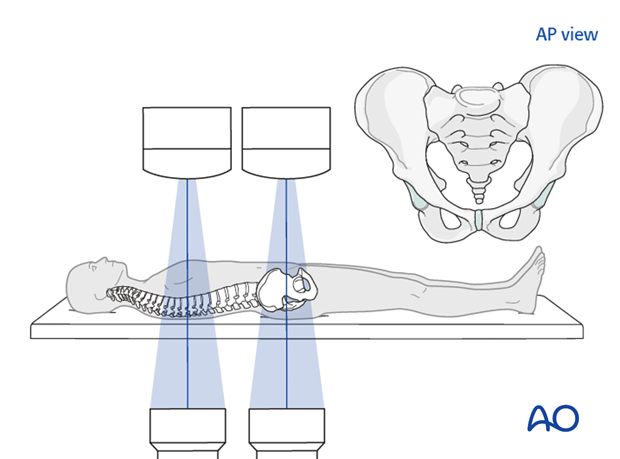Breathing
1. Is ventilation adequate?
Ventilation is adequate if:
- Respiration rate is 10-29 / min
- Breath sounds are adequate bilaterally
- There are no signs of rib fractures (flail chest)
When ventilation is adequate, proceed to examine circulation.
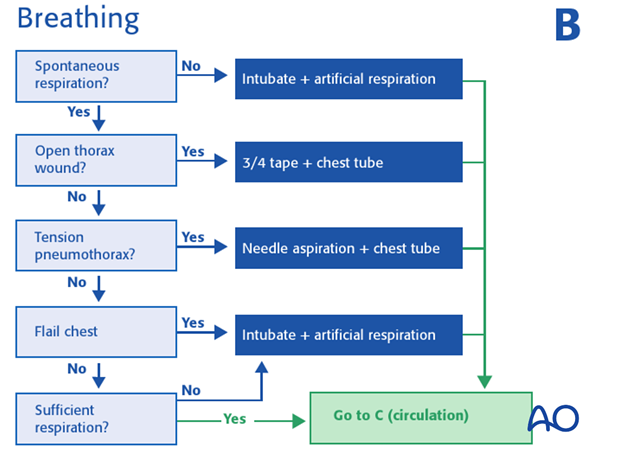
2. Further evaluation when ventilation is not adequate
Examine for "sucking chest wound"
The thorax is examined for a "sucking chest wound".
(Open wound connecting to plural cavity that prevents creation of negative pressure for inspiration)
Emergency care of sucking wound: Create a flap valve by covering the wound by a non-porous bandage taped on three of four sides. This prevents air entry during inspiration while allowing air to escape during expiration.
Ventilation is adequate if:
- Respiration rate is 10-29 / min
- Both sides are ventilated
When ventilation is adequate, proceed to examine circulation.

Examined for possible tension pneumothorax
The patient should be examined for a possible tension pneumothorax.
Signs of a tension pneumothorax are:
- Respiratory distress
- Hypotension
- Tachycardia
- Hypersonic percussion
- Tracheal deviation away from side of the injury
- No breath sounds on the injured side
- Expansion of the hemithorax on the injured side without respiratory movement
- Distended neck veins
- Cyanosis in extremis situation
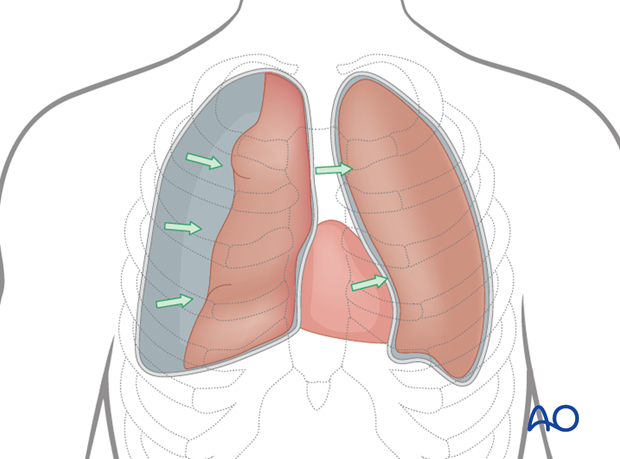
If tension pneumothorax is suspected, direct decompression is needed using a large caliber needle placed in the second intercostal space in the midclavicular line.
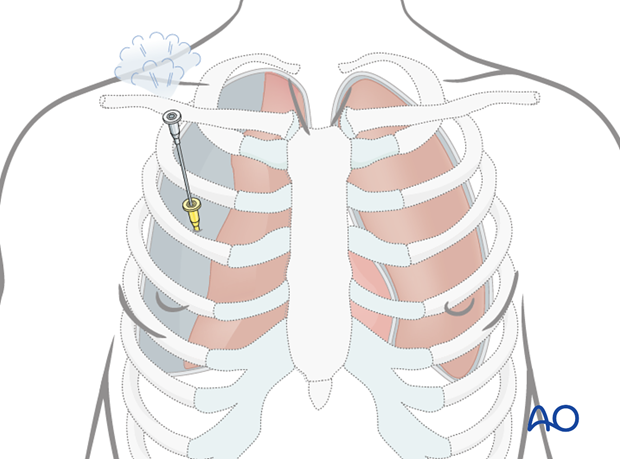
This needle is replaced by a chest tube using local anesthesia in the 5th intercostal space at the level of the anterior axillary line.
Ventilation is adequate if:
- Respiration rate is 10-29 / min
- Both sides are ventilated
When ventilation is adequate, proceed to examine circulation.
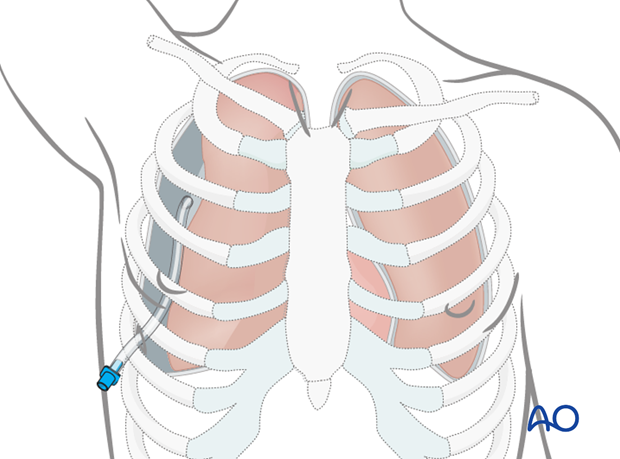
Examine for massive hemothorax
The patient should also be examined for massive hemothorax.
Signs of massive hemothorax are:
- Respiratory distress
- Hypotension
- Tachycardia
- Dull percussion
If a massive hemothorax is suspected it can be confirmed by X-ray (massive whitening of the hemithorax). A massive hemothorax needs drainage with a chest tube. An X-ray is not required if the clinical indications are strong.
The chest tube is inserted using local anaesthesia in the 5th intercostal space at the level of the anterior axillary line. Blood and air are drained.
Ventilation is adequate if:
- Respiration rate is 10-29 / min
- Both sides are ventilated
When ventilation is adequate, proceed to examine circulation.

3. Initial trauma X-Rays
AP chest and pelvis X-rays should be performed simultaneously with evaluation and treatment.
AP chest and pelvis X-rays should be performed simultaneously with evaluation and treatment.
Chest X-ray is valuable for excluding massive hemothorax, hemo- or pneumo-thorax and rib fractures.
Pelvis X-ray will show significant displacement of the pelvic ring. If present, this is essentially diagnostic of an unstable pelvic injury.
